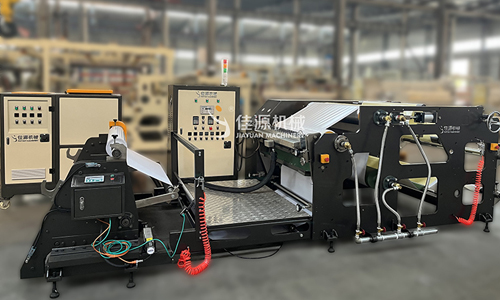
Coating is a precision manufacturing technique defined as the process of applying one or more layers of liquid coating, varnish, or protective layer uniformly onto one or both sides of a substrate (typically a flexible film or release liner). This liquid coating is subsequently processed through drying ovens or specific curing methods (such as UV curing, thermal curing, electron beam curing, etc.) to ultimately form one or more solid functional layers with specific properties (e.g., adhesion, barrier properties, conductivity, optical characteristics, protection). The success of this process critically depends on in-depth research and precise control over the physical properties (such as viscosity, rheology, surface tension) of the coating fluid.
Laminating (or combining) is a closely related but distinct process. It is defined as the process of permanently bonding two or more (usually pre-prepared) materials (such as films, foils, nonwovens, papers) together using physical or chemical methods (e.g., adhesives, heat/pressure, extrusion). This forms a multi-layer composite material structure. The goal of laminating is to integrate the superior properties of different materials, achieving functional combinations unattainable with a single material (e.g., strength and flexibility, barrier and breathability, conductivity and insulation).
To implement the coating process, a coating production line (coating machine) is an essential piece of process equipment. Coating machines are not standardized, off-the-shelf units; instead, they require highly customized design and manufacturing based on the specific technical requirements of the product being produced (e.g., substrate type, coating fluid characteristics, coating thickness precision, drying/curing method, production speed).
A typical coating production line generally consists of the following eight core mechanical components, working in concert to enable continuous production from raw material to finished product:
Unwinding: Precisely controls and continuously feeds the substrate from a roll.
Coating Head: The core device performing the coating operation. It is responsible for precisely applying a predetermined amount of coating fluid in a specific pattern (e.g., uniform film, stripes, dots) onto the substrate surface. Common coating methods include comma bar, micro-gravure, slot die, spray, dip coating, etc.
Drying Oven / Heating Tunnel: Provides a controlled thermal environment to evaporate solvents from the coating or initiate chemical reactions for curing, using methods like hot air convection or infrared radiation.
Ventilation and Exhaust: Removes solvent vapors, hot air, and volatile organic compounds (VOCs) generated within the oven, maintaining stable airflow, uniform temperature, and meeting environmental regulations.
Machine Frame: Provides a robust, stable, and high-precision support structure for the entire production line, ensuring accurate positioning and stable operation of all components.
Cooling: After the coating is dried/cured, this section (using cooling rolls or air) reduces the temperature of the substrate and coating to stabilize it and prepare it for subsequent processes (like laminating or rewinding).
Laminating: (Optional but common) Precisely bonds the coated substrate to another material (a second substrate) using adhesives or heat/pressure to form a multi-layer composite material.
Rewinding: Re-winds the finished coated (and potentially laminated) product material into neat, uniformly tensioned rolls.
Coating and laminating processes are widely used in numerous fields such as tapes, labels, functional films, optical films, battery electrodes, medical dressings, packaging materials, and textile coatings, making them indispensable key technologies in modern manufacturing.
 HOT LINE: 086-577-65159218
HOT LINE: 086-577-65159218












